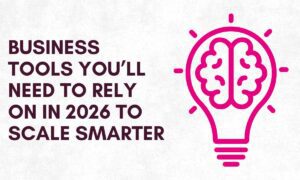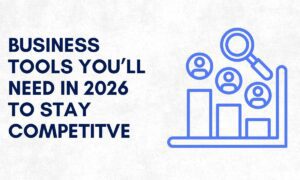The legal profession is undergoing a quiet but profound transformation. Traditionally known for its reliance on precedent, manual processes, and countless billable hours, law is now being reshaped by the rise of artificial intelligence (AI). From automating routine research tasks to drafting contracts in seconds, AI is streamlining the way legal professionals work. These tools are not replacing lawyers—but they are redefining how lawyers spend their time, where they find value, and how they deliver service. This shift is part of a broader movement how AI is shaping the future of legal innovation bringing speed, accuracy, and efficiency to an industry built on precision and logic.,
For many firms, AI is no longer a theoretical concept. It’s already embedded in legal tech platforms, powering document review, enhancing legal analytics, and enabling smarter case strategy. At the center of this evolution are two critical areas where AI is having the biggest impact: legal research and legal drafting.
Legal research is foundational to the practice of law. It involves identifying relevant statutes, regulations, case law, and legal commentary to support a client’s position. While vital, the process is notoriously time-consuming and labor-intensive. Lawyers often spend hours poring over databases, reviewing hundreds of documents, and cross-referencing precedents—all while trying to avoid the risk of missing a critical detail.
Before AI tools, even the most seasoned attorneys could spend an entire day tracking down one perfect case. Not only does this affect billing and profitability, but it also slows down the delivery of advice in urgent situations.
Enter AI: Smarter Search and Contextual Understanding
AI-powered legal research tools, such as Lexis+ AI, Westlaw Precision, and newer entrants like Casetext and Harvey AI, are turning this process on its head. These platforms use natural language processing (NLP), machine learning, and semantic search to interpret legal queries in plain English and surface relevant materials far more quickly.
Unlike traditional keyword-based search tools, AI platforms can understand the context and intent behind a query. For example, a search for “implied contract liability in software development” won’t just return documents with those exact words. It can pull up relevant case law even if the language differs, prioritizing cases based on jurisdiction, procedural history, or cited outcomes.
Additionally, many of these tools now include features like:
- Case summarization: AI generates quick summaries of long cases, saving time.
- Citation mapping: Visual diagrams show how cases are interconnected, aiding analysis.
- Smart recommendations: Based on prior queries, AI suggests related legal arguments or authorities.
This is transforming research from a time-draining task into a more strategic, streamlined process.
Legal Drafting: From Templates to AI-Assisted Writing
Just as AI is revolutionizing research, it’s also making major strides in legal drafting. Whether it’s a lease agreement, an NDA, or a memorandum, legal documents are built on logic, structure, and precedent—making them ideal for automation.
Historically, lawyers relied on templates and past documents to create new drafts. While efficient, this approach still required manual customization, proofreading, and risk of human error. AI drafting tools now bring a new layer of speed and precision to the process.
Platforms use AI to draft legal clauses, suggest alternative language, and even flag risky or missing provisions based on best practices. Users can input a simple prompt—like “draft a one-year employment agreement with a non-compete clause”—and receive a working document in seconds.
This not only saves time but helps standardize quality across a firm, particularly for junior associates or in-house legal departments without deep drafting experience.
Key Benefits of AI in Legal Research and Drafting
- Speed and Efficiency
What once took hours now takes minutes. AI dramatically cuts down on the time required to search, review, and compose legal content. This means firms can handle more matters, respond to clients faster, and increase overall productivity. - Accuracy and Reduced Risk
AI reduces human error by consistently applying logic and pulling from validated sources. It can also catch inconsistencies or missing elements in contracts that might go unnoticed in manual reviews. - Enhanced Access to Legal Services
Faster research and drafting can lower the cost of legal services, making them more accessible to small businesses, startups, and individuals who might otherwise avoid hiring a lawyer due to price. - Refocusing Lawyer Time on Strategy
By automating repetitive tasks, AI frees up lawyers to focus on higher-level strategic thinking, client relationship-building, negotiation, and litigation planning—the things that truly require human judgment.
Challenges and Limitations
Of course, AI is not without its challenges. The technology is only as good as the data it’s trained on, and legal systems are nuanced, regional, and constantly evolving.
Bias and Gaps in Data
If the training data has biases—or if certain jurisdictions or cases are underrepresented—AI tools may produce skewed or incomplete results. This can be dangerous if used uncritically.
Overreliance and the Human Element
AI is a tool, not a replacement for legal expertise. Lawyers must review and validate all outputs, especially in sensitive or high-stakes matters. AI can suggest, but it cannot reason or empathize the way a human can.
Privacy and Confidentiality
Some legal teams hesitate to adopt cloud-based AI tools due to concerns about data privacy and client confidentiality. As adoption grows, vendors must be transparent about data usage, storage, and security protocols.
What’s Next for AI in Legal Work?
The future of AI in law looks increasingly collaborative. We’re already seeing AI evolve from a background assistant to a co-pilot—working alongside lawyers to brainstorm arguments, generate early drafts, and even predict legal outcomes based on precedent.
In the near future, we can expect:
- Voice-based legal research through smart assistants
- Real-time contract negotiation tools powered by AI
- Predictive litigation analytics that help lawyers assess the probability of success
- Deeper integration of AI into practice management and billing systems
As more firms adopt AI, the competitive landscape will shift. Clients will expect faster turnaround times, more transparency, and potentially lower fees. Firms that embrace AI thoughtfully—pairing technology with human expertise—will be best positioned to lead.
AI is no longer an abstract concept or future prediction—it’s here, and it’s already changing how legal work gets done. By transforming research and drafting into faster, more accurate processes, AI allows lawyers to do more with less, while still upholding the precision and integrity that the legal profession demands.
For firms and legal departments navigating the path forward, the key is to view AI not as a threat, but as a partner. Used wisely, these tools enhance—not replace—the work of skilled legal professionals. The firms that lean into this transformation will be the ones who define the next era of legal excellence.





























